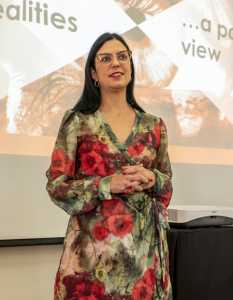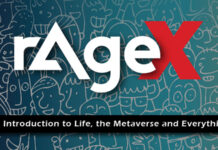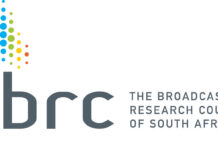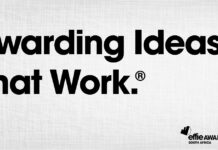
Doing business in Africa presents multiple opportunities and challenges. To achieve business excellence on the continent, it is essential that we understand consumers in Africa and their changing needs.
For the financial services industry to achieve business excellence in Africa it is important to understand what is at play from a political or social point of view. Each country and territory has its own particular discourse, and business needs, and these need to be leveraged in a way that’s relevant to the consumer.
Sarina de Beer, director: client experience at Ask Afrika, shared these and the following insights about the vital link between business excellence and risk mitigation in Africa at the Hollard media roundtable on 30 November 2018 that was held in celebration of the insurer’s sponsorship of the Category of the Year for the 8th Annual All Africa Business Leaders Awards (AABLA) held on the evening of 29 November 2018.
Ask Afrika investigated the extent to which the financial services industry is meeting the needs of these consumers, redefining itself in terms of relevance and thereby gaining a different entry point into the African market space.
It is very easy to generalise and think of Africa as one country, and to make the same mistake with consumers. It is human nature to group, stereotype and categorise in an attempt to understand, and it is simply easier not to interrogate and unpack nuances.
Businesses often stereotype consumers, even when it is their own customers, for their own industry. They often take too holistic a perspective and use categorisation that they are comfortable with, and by doing this, they miss the point and don’t really “get” the consumer.
Over-simplified segmentation models are used, looking at consumption patterns, adoption levels and whether a product is working or not – but in essence there is no true understanding of the people with whom the company is engaging.
Business executives need to bridge the divide between themselves and consumers, irrespective of geographical location. If there is a difference in culture, social milieu or ideology between the business and the consumer, it makes bridging the gap even more difficult. The concept remains the same: it’s all about really understanding the target market in a way that not only makes the product or offering more successful, but relevant to the consumer – because that is the part that is normally missed.
To truly understand the African consumer, relevance and engagement are key to get a clear perspective about how businesses really interface with people. Marketers so often speak about things like personalisation and understand the concept, but don’t know what to do with it or how to employ it in business practice. The tendency is to oversimplify and generalise in an attempt to understand the complexity of the African business landscape, but this is where the financial services industry loses ground.
Even though as a market research company, Ask Afrika looks at these people through the lens of their behaviours as consumers, it is important to remember that they are not just consumers, but citizens in a social and political context with human needs and human desires.
A lot of research has been done about the emerging middle class, and for the financial services industry this is an important target market to focus on. There are different reports about, and statistics published about, this market, which tend to be contradictory, even when it comes to the size of the emerging market.
Ipsos, the market research company, claimed a couple of years ago that the market size is about 100-million people, and the African Development Bank (ADB) said in 2010 it was 350-million. What is clear is that it’s probably significantly bigger than what people generally think and significantly more misunderstood, from an economic and a business point of view.
There doesn’t seem to be a lot of consensus about the middle class in Africa; even the definition is a bit vague. The Ipsos Lions of Africa study defines a person in the African middle class as someone who has a daily income of between $4 and $70. He or she also has a disposable income; is employed or is running a business or studying at college; and has some secondary school education. According to these criteria, 60% of the urban population fall into this definition of middle class.
Despite the contradictory estimates of the size of the market, the emerging middle class is driven by better governance, economic growth and poverty reduction, as well as productivity, demand for commodities, technology and communications, and the democratisation of knowledge and education. The bottom line is that it is an increasingly growing market, and in any growth market there’s opportunity – and how to leverage and understand the opportunity is far more important than only trying to understand which numbers are correct.
The majority (60%) of the middle market are on the brink of poverty and barely classified as emerging market – they don’t really have disposable income. Of course, classification and market segmentation are required, but it is also important to understand consumer behaviour and that many people don’t live and spend within their means. It is vital to understand how consumers spend their disposable income, and this is determined by their attitudes, mindset, priorities and choices – not necessarily what means they have available, because it’s more complex than that; people don’t only consume based on what they can afford.
It would be remiss for luxury brands, for example, to think that they don’t have a place in the African middle market. Someone may buy designer clothing rather than buy a reasonably priced car. Consumers create access based on what they are really after; this is linked to identity and status. It’s this behaviour that needs to be understood to stay relevant to this market.
In the financial services sector, M-Pesa has democratised retail banking in East Africa and has fulfilled very different needs in terms of access. It’s a radically different model to what has been adopted locally. This is the type of progressiveness that we see in particular industries in various African countries. It is about creating access based on uniquely African models.
Traditional financial service products may not work for this market, but if one looks at what access to financial industry products enables people to do, it is remarkable. Businesses have to start thinking very differently in terms of how they are driving access, and what sits behind the uptake of financial services from a behavioral and attitudinal point of view.
Companies tend to take a linear, Western approach to business that works well in a developed, formal economy and then adapt for various regions in Africa. By doing this they are not truly being relevant to African consumers who live in a circular, community- and family-oriented society. Business is often conducted in the informal sector and entrepreneurship is common, with unpredictable income. So fixed monthly bank charges or insurance premiums are not ideal for the African middle market.
To create viable access, a circular model that caters for fluctuating income where people live and earn on a day-to-day basis is required. Communally based financial service offerings can be specifically tailored to the way that African consumers often live and work. It is also important for companies to take cognisance of the embedded fragility and vulnerability of the African middle class, and to take ethical and social responsibility, over and above the economic imperative.
It is not that financial services are inaccessible to this market, but rather that there is a disconnect between the linear product offerings and the reality of how business functions in a circular way in Africa. There is a huge opportunity for consumer-centric offerings that enhance the way Africans do things, rather than expecting Africans to adapt to a linear system that simply does not work for them.
It is from this point of view that one needs to understand perceptions versus realities. How the consumer perceives the category or the product and how that influences their decision making is what really matters. It’s about understanding consumer needs and perceptions, and how to leverage and work with these effectively.




















































































